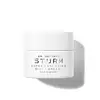What's inside
What's inside
 Key Ingredients
Key Ingredients

 Benefits
Benefits

 Concerns
Concerns

 Ingredients Side-by-side
Ingredients Side-by-side

Water
Skin ConditioningCoco-Caprylate/Caprate
EmollientCetyl Alcohol
EmollientGlycerin
HumectantHelianthus Annuus Seed Oil
EmollientPrunus Amygdalus Dulcis Oil
Skin ConditioningPotassium Cetyl Phosphate
EmulsifyingLactobacillus/Portulaca Oleracea Ferment Extract
AntioxidantHydrogenated Palm Glycerides
EmollientArgania Spinosa Kernel Oil
EmollientPanthenol
Skin ConditioningSodium Polyglutamate
HumectantMaltodextrin
AbsorbentPersea Gratissima Fruit Extract
EmollientSodium Hyaluronate
HumectantLeuconostoc/Radish Root Ferment Filtrate
AntimicrobialNonapeptide-1
Skin ConditioningTocopherol
AntioxidantXanthan Gum
EmulsifyingPantolactone
HumectantCaprylyl Glycol
EmollientEthylhexylglycerin
Skin ConditioningSodium Phosphate
BufferingPhenoxyethanol
PreservativeCitric Acid
BufferingDisodium Phosphate
BufferingWater, Coco-Caprylate/Caprate, Cetyl Alcohol, Glycerin, Helianthus Annuus Seed Oil, Prunus Amygdalus Dulcis Oil, Potassium Cetyl Phosphate, Lactobacillus/Portulaca Oleracea Ferment Extract, Hydrogenated Palm Glycerides, Argania Spinosa Kernel Oil, Panthenol, Sodium Polyglutamate, Maltodextrin, Persea Gratissima Fruit Extract, Sodium Hyaluronate, Leuconostoc/Radish Root Ferment Filtrate, Nonapeptide-1, Tocopherol, Xanthan Gum, Pantolactone, Caprylyl Glycol, Ethylhexylglycerin, Sodium Phosphate, Phenoxyethanol, Citric Acid, Disodium Phosphate
Water
Skin ConditioningDimethicone
EmollientHydrogenated Polyisobutene
EmollientGlycerin
HumectantCholesterol
EmollientC12-15 Alkyl Benzoate
AntimicrobialCeramide NP
Skin ConditioningHelianthus Annuus Seed Oil Unsaponifiables
EmollientBis-PEG-18 Methyl Ether Dimethyl Silane
EmollientSodium Polyacrylate
AbsorbentPEG-10 Dimethicone
Skin ConditioningNylon-12
Lauryl PEG-9 Polydimethylsiloxyethyl Dimethicone
Skin ConditioningDimethicone/PEG-10/15 Crosspolymer
Phenoxyethanol
PreservativeDisteardimonium Hectorite
StabilisingHydroxyethylpiperazine Ethane Sulfonic Acid
BufferingAmmonium Polyacryloyldimethyl Taurate
Emulsion StabilisingChlorphenesin
AntimicrobialCaprylyl Glycol
EmollientPEG/PPG-18/18 Dimethicone
EmulsifyingPropylene Carbonate
SolventDisodium EDTA
Acrylonitrile/Methyl Methacrylate/Vinylidene Chloride Copolymer
Adenosine
Skin ConditioningDipropylene Glycol
HumectantLavandula Angustifolia Oil
MaskingRosmarinus Officinalis Leaf Oil
MaskingT-Butyl Alcohol
PerfumingMentha Piperita Oil
MaskingSodium Citrate
BufferingLinalool
PerfumingIsobutane
Ceramide EOP
Skin ConditioningBHT
AntioxidantTocopherol
AntioxidantLimonene
PerfumingCeramide AP
Skin ConditioningWater, Dimethicone, Hydrogenated Polyisobutene, Glycerin, Cholesterol, C12-15 Alkyl Benzoate, Ceramide NP, Helianthus Annuus Seed Oil Unsaponifiables, Bis-PEG-18 Methyl Ether Dimethyl Silane, Sodium Polyacrylate, PEG-10 Dimethicone, Nylon-12, Lauryl PEG-9 Polydimethylsiloxyethyl Dimethicone, Dimethicone/PEG-10/15 Crosspolymer, Phenoxyethanol, Disteardimonium Hectorite, Hydroxyethylpiperazine Ethane Sulfonic Acid, Ammonium Polyacryloyldimethyl Taurate, Chlorphenesin, Caprylyl Glycol, PEG/PPG-18/18 Dimethicone, Propylene Carbonate, Disodium EDTA, Acrylonitrile/Methyl Methacrylate/Vinylidene Chloride Copolymer, Adenosine, Dipropylene Glycol, Lavandula Angustifolia Oil, Rosmarinus Officinalis Leaf Oil, T-Butyl Alcohol, Mentha Piperita Oil, Sodium Citrate, Linalool, Isobutane, Ceramide EOP, BHT, Tocopherol, Limonene, Ceramide AP
 Reviews
Reviews

Ingredients Explained
These ingredients are found in both products.
Ingredients higher up in an ingredient list are typically present in a larger amount.
Caprylyl Glycol is a humectant and emollient, meaning it attracts and preserves moisture.
It is a common ingredient in many products, especially those designed to hydrate skin. The primary benefits are retaining moisture, skin softening, and promoting a healthy skin barrier.
Though Caprylyl Glycol is an alcohol derived from fatty acids, it is not the kind that can dry out skin.
This ingredient is also used as a preservative to extend the life of products. It has slight antimicrobial properties.
Learn more about Caprylyl GlycolGlycerin is already naturally found in your skin. It helps moisturize and protect your skin.
A study from 2016 found glycerin to be more effective as a humectant than AHAs and hyaluronic acid.
As a humectant, it helps the skin stay hydrated by pulling moisture to your skin. The low molecular weight of glycerin allows it to pull moisture into the deeper layers of your skin.
Hydrated skin improves your skin barrier; Your skin barrier helps protect against irritants and bacteria.
Glycerin has also been found to have antimicrobial and antiviral properties. Due to these properties, glycerin is often used in wound and burn treatments.
In cosmetics, glycerin is usually derived from plants such as soybean or palm. However, it can also be sourced from animals, such as tallow or animal fat.
This ingredient is organic, colorless, odorless, and non-toxic.
Glycerin is the name for this ingredient in American English. British English uses Glycerol/Glycerine.
Learn more about GlycerinPhenoxyethanol is a preservative that has germicide, antimicrobial, and aromatic properties. Studies show that phenoxyethanol can prevent microbial growth. By itself, it has a scent that is similar to that of a rose.
It's often used in formulations along with Caprylyl Glycol to preserve the shelf life of products.
Tocopherol (also known as Vitamin E) is a common antioxidant used to help protect the skin from free-radicals and strengthen the skin barrier. It's also fat soluble - this means our skin is great at absorbing it.
Vitamin E also helps keep your natural skin lipids healthy. Your lipid skin barrier naturally consists of lipids, ceramides, and fatty acids. Vitamin E offers extra protection for your skin’s lipid barrier, keeping your skin healthy and nourished.
Another benefit is a bit of UV protection. Vitamin E helps reduce the damage caused by UVB rays. (It should not replace your sunscreen). Combining it with Vitamin C can decrease sunburned cells and hyperpigmentation after UV exposure.
You might have noticed Vitamin E + C often paired together. This is because it is great at stabilizing Vitamin C. Using the two together helps increase the effectiveness of both ingredients.
There are often claims that Vitamin E can reduce/prevent scarring, but these claims haven't been confirmed by scientific research.
Learn more about TocopherolWater. It's the most common cosmetic ingredient of all. You'll usually see it at the top of ingredient lists, meaning that it makes up the largest part of the product.
So why is it so popular? Water most often acts as a solvent - this means that it helps dissolve other ingredients into the formulation.
You'll also recognize water as that liquid we all need to stay alive. If you see this, drink a glass of water. Stay hydrated!
Learn more about Water